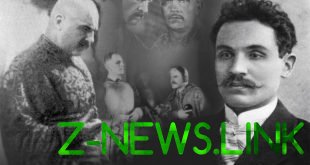 Ten important discoveries.
Ten important discoveries.
The ancient Greek physician Hippocrates described in his writings 200 drugs. Now at the disposal of physicians to their more than 200 thousand. But in this ocean of pharmaceutical can be identified 10 drugs that have become a real breakthrough in medical practice.
Opium
Throughout history, doctors and scientists searched for a means to defeat pain. Opium was the first strong painkillers.
About the medicinal properties of opium (the dried juice of unripe heads of somnolent poppy) already knew the doctors of Ancient Greece and Rome, Ancient China and India, paying tincture of opium and Mandrake for pain relief.
In 1806, a young chemist Friedrich sertyurner isolated from opium alkaloids white crystals, and called them “morphine” – in honor of the God of dreams Morpheus. The appearance of morphine, especially after the invention in 1853 of a syringe, gave physicians a powerful tool against pain. However, it soon became clear that morphine, like opium, is addictive. The scientists faced the task of finding a substitute that would not cause addiction.

In 1874, chemists synthesized from opium-heroin – in its anesthetic effects he was much stronger than morphine. Until 1910 heroin could be bought at any pharmacy, but then it was proved that it is no less terrible drug.
Opium – the ancestor of all modern narcotic analgesics. In the second half of the XXth century the synthetic was obtained by promedol, finedon, tramadol, fentanyl, Diprivan, butorphanol and other drugs, and also highlights some of the alkaloids of opium: antitussive codeine, the vasodilator drug papaverine. Most of them are included in official lists of drugs, store and sell only under the strictest control.
The smallpox vaccine
Smallpox, which is believed to have originated over 3,000 years ago in India and Egypt, has long been one of the most terrible diseases known to mankind. Numerous epidemics of smallpox cover the entire continent. Only in 1980 the world health organization officially recognized that smallpox eradicated in all developed countries of the globe. This was possible due to universal vaccination.
The founder of the method of vaccination was the English doctor Edward Jenner. May 14, 1796 Jenner inoculated eight-year-old boy James Phipps contents (lymph) pustules the hands of peasant Sarah Nelms became infected with cowpox. Six weeks later, Jenner introduced James lymph from pustules of another patient – this time smallpox. The boy did not get sick.

Repeating the experiment 23 times, in 1798, Edward Jenner published a paper “Study of causes and actions cowpox”. In the same year the vaccine was introduced in the British army and Navy. And Napoleon, despite the fact that in those years France was at war with Britain, ordered to produce gold medal in honor of Jenner, in 1805, introduced in France compulsory vaccination.
Thanks to the discovery of Jenner’s ubiquitous norm of steel and other vaccinations against hepatitis b, diphtheria, pertussis, rubella, polio, tetanus, and other infections. In 2007, the U.S. was the world’s first anticancer vaccine – it needs to prevent cervical cancer, which is caused by the human papilloma virus (HPV).
Live
Narcotic effect of ether was discovered in 1525 by a physician and alchemist Paracelsus. However, before the era of anesthesia was still very far away. In 1797, a young British chemist Humphry Davy accidentally discovered the analgesic action of nitrous oxide.
During the experiments, Davy noticed that the gas causes a pleasant sensation and improves mood. And gave it a name – “laughing gas”. The scientist suggested the possibility of using nitrous oxide in surgery. However, for half a century one of this idea is not remembered.
In 1818, another British scientist Michael Faraday experienced the soporific effect of ether vapor, and even posted on this topic work. But for many years it remained unnoticed. The era of anesthesia practice began later.

In 1844 the provincial American dentist Horace wells asked his colleague to remove his healthy tooth. Previously after inhaling “laughing gas”, wells suffered a relatively quiet painful procedure and soon after went to Boston, where he persuaded his friend, also a dentist, William Morton to make a public demonstration of the new method. This presentation, which was organized in January 1845, ended in complete failure. Colleagues ridiculed, wells returned home.
However, the ideas of Horace bedolagi believe a brilliant chemist and physician Charles Jackson, who was preparing once Morton to the University. Jackson experienced shared with Morton knowledge about how to use sulfuric ether for anesthesia. So began their collaboration and long-standing feud.
Stubborn and ambitious Morton immediately began secretly experimenting with ether. He developed a special device – vaporizer ether (bottle with flexible tube), conducted experiments on himself and on September 30, 1846 painlessly pulled out a tooth from a patient Eben frost.
News about the successful experience of the dentist flew to the famous surgeon, chief physician hospital Boston John Warren, who was to prove the effectiveness of ether anesthesia, invited Morton to assist him during surgery.

October 16, 1846, in a clinical case of the Boston city hospital with a large gathering of doctors, students and just curious people was conducted the world’s first public operation, involving the anesthesiologist. Morton handled his staff a 25−year-old printer, Gilbert Abbott, and Warren calmly removed the tumor on the neck of the patient.
After finishing the operation, he said, addressing the audience: “Dear colleagues! It does not sell”. October 16 is considered the official date of the birth of modern anesthesiology.
For General anesthesia today use modern drugs and sophisticated equipment. But by and large the General principle of immersion in the “chemical dream” has remained the same as half a century ago. Attempts to create a conceptually different anesthesia while without success.
Cocaine
Cocaine is a major component of local anesthetics (procaine, tetracaine, trimekain, lidocaine, etc.), without which it is impossible dentistry, outpatient surgery, traumatology, gynecology, Oncology, plastic surgery, neurology and other medical disciplines.
Conquistadors, and then the naturalists and explorers who explored South America, noticed that the locals constantly chewing leaves of a plant called Coca, can easily endure fatigue, pain and hunger.
In 1860, German chemist albert Niemann first identified the main active ingredient of the mysterious leaves, the alkaloid cocaine. Soon Niemann died, and not finish the job. Later his colleague Wilhelm lossen managed to get cocaine in its purest form.

Then, and spent his experiments the young Sigmund Freud, the Viennese neurologist and founder of psychoanalysis. He put a little cocaine on the tongue and it was soon established that loses its sensitivity. Freud wrote about the experiments with cocaine in one of his scientific papers, but never took the next step from observation to practical conclusion, which (being made) would have led to the discovery of the value of cocaine for medicine.
This step was taken in 1879, St. Petersburg, pharmacologist Professor Basil Anrep, who first thoroughly researched and suggested that cocaine use for local anesthesia.
In 1884, to study the properties of cocaine began Viennese ophthalmologist Karl Koller, who told Freud about his experiences. Koller also conducted experiments on myself moistening the mucous membranes of the mouth and eyelid, and the cornea of the eye a solution of cocaine, he found that the mucous lose sensitivity. Ophthalmologist realized this solution can be used for pain relief!
The next and most important step was taken in 1890, the German surgeon Carl Schleich. After numerous experiments the Schleich finally managed to create a persistent anesthetic: to a 0.05-percent solution of salt, he added a cocaine – get ready to use the anesthetizing solution, which, importantly, was too long to store in vials.

The discovery of General anesthesia and local anesthesia meant the end of the struggle for pain relief. All subsequent advances in this area have only their improvements and additions.
The toxicity of cocaine has always baffled the doctors. It is because getting Alfred Einhorn in 1905, the drug procaine marked the beginning of a new stage in the development of local anesthesia. Novocaine, which is 16 times less toxic than cocaine, quickly won the sympathy of specialists, the more that had pain sufficient force. With this direct descendant of cocaine many people have probably encountered at the dentist’s office.
Aspirin
Long ago people noticed that willow bark helps with fever. The therapeutic properties of the crust due to the presence of salts of salicylic acid.
In 1897, in the laboratory of chemical concern Bayer young German chemist Felix Hoffman synthesized acetylsalicylic acid in a chemically pure and stable form. Hoffman was trying to find an effective means against pain in the joints, which had suffered by his father. In clinical practice, aspirin was introduced by the German physician Hermann Dresser, a friend of Hoffman.

The drug proved highly effective, and March 6, 1899 the Imperial patent office in Berlin has made it to the register of trade marks under number 36433 called “Aspirin”.
According to the pharmacological Department of the who, aspirin and its analogs for several years the lead in the ten most popular drugs. Every year in the world sold more than 45 million tons of this drug.
Vitamins
In the second half of the XIX century it was believed that the nutritional value of food is determined only by their content of protein, fat, carbohydrates, mineral salts and water. Meanwhile, over the centuries mankind has accumulated a great experience of long voyages, when sufficient stocks of food people were dying of scurvy, and infectious diseases. Why?
The answer to this question it was not until until in 1880 the Russian scientist Nikolai Lunin studied the role of minerals in nutrition, did not notice that the mouse absorbs artificial foods, composed of all the known parts of milk (casein, fat, sugar and salt), withered and died. A mouse that received a natural milk, be healthy and active. So, milk contains other substances essential for nutrition, concluded the scientist.

Lunin Nikolay Ivanovich
16 years later found the cause of the disease beriberi, common among people of Japan, Korea and Indonesia, which were fed basically cleaned rice. Dutch physician Christian Aikman’s, who worked in the prison hospital on the island of Java, helped… chickens roamed the yard. They were fed purified grain, and the birds suffered a disease resembling beriberi. Cost to replace it with brown rice – the disease has passed.
And in 1911 a young Polish chemist Casimir Funk isolated from rice husks the vitamin in crystalline form. Performing a series of experiments, he came to the conclusion that the mysterious ailment that prevents chicken simple nitrogen-containing substance – Amin (vitamin B1). A year later, he also came up with the name for these substances “vitamins” from the Latin words “vita” (life) and “amine” (nitrogen).
Currently, there are about 20 vitamins are part of enzymes (water-soluble vitamins C, b group, PP, etc.) and cellular membranes (fat-soluble E, A, D, carotenes), take an active part in all processes of life. All are necessary for the treatment of scurvy, rickets, and other hypovitaminosis, prevention of most diseases and rehabilitation of thousands of people after disease and surgery.
Salvarsan
In the early twentieth century the vast majority of drugs created from chemical compounds that exist in nature. Roughly speaking, all this was “folk remedies”, only cleaned up and organized. But the success of synthetic chemistry has allowed deliberately to create substances that act on infectious agents or tumor cells.
In 1907, the Austrian physician Paul Ehrlich (received together with Mechnikov the Nobel prize for work on immunity) synthesized drug for the treatment of syphilis, salvarsan, which has spread rapidly around the world. It was the first ever drug created to solve a specific problem.

Paul Ehrlich
Ehrlich dreamed of a “magic bullet” that would selectively affect the causative agents of a disease and at the same time, was harmless to the body. To get a cure for syphilis, Ehrlich synthesized 605 different substances. And only the 606th experiment brought good luck.
Thus was born the chemotherapy – treatment with chemicals designed specifically to combat a particular disease. After the salvarsan was synthesized thousands of new drugs.
Now 90% of drugs sold in pharmacies or used in hospitals, is a synthetic drugs.
Insulin
Type one diabetes… This diagnosis is made about 10-15 million people on the planet. Almost the only salvation for them is a lifetime to take insulin injections. Without this drug all of these people would be dead.
In 1920, the young canadian researchers surgeon and physiologist Frederick Banting and medical student Charles best after a three-month experiments have insulin from the islet tissue of the pancreas of dogs. By the end of 1921 Banting improved the technology and began to prepare the insulin from extracts of the pancreas of unborn calves.
In January 1922 in a children’s hospital here in Toronto for the first time in clinical practice has been a successful treatment with insulin 14-year-old boy suffering from a severe form of diabetes. The patient’s life was saved.

Then followed clinical trials, which have been able to develop key recommendations for use and dosing of insulin. At the end of 1922 the new preparation has appeared in the drug market. The patent for insulin was sold to the University of Toronto for one dollar, and soon the medication began to produce on an industrial scale.
In 1923 Frederick Banting and John Macleod, in the laboratory, which conducted research, received a Nobel prize. This is not the only Nobel prize awarded for insulin. In 1958, the highest scientific prize was awarded to the British molecular biologist Frederick Sanger for determining the sequence of amino acids that make up insulin.
The hormone insulin is discovered by Banting, proved to be an effective weapon against diabetes, one of the few drugs that quickly brought relief to many people. And still for most diabetics it is equivalent to a life.
Penicillin
Green mold has long proved itself the worst enemy of germs. In the XV century healers used it to treat wounds festering. In the late nineteenth century, highlighting the antibiotics studied Italian doctor B. Gosio, but the results of his experiments have not survived.
In 1929, Professor of Microbiology, University of London, Alexander Fleming once forgot to wash the Petri dish with unnecessary bacterial culture. After a few days, Fleming found in a Cup of green mold and carefully examined it. It turned out that the fungus secretes a special antibiotic substance, which passes into the nutrient medium and inhibits the growth of many bacteria.
Fleming called the magic bullet “penicillin”, as it generates mold belongs to the fungi of the genus Penicillium. Scientist found that they discovered the substance acts only on pathogenic microbes without adverse effects on leukocytes and other cells of the human body.

Fleming published a report about the discovery in a scientific journal and soon received a penicillin in its pure form. However, the joy the academic was marred by the fact that he could not allocate it a stable form ready for practical use.
Only in 1940, this difficult task was solved by a group of young Oxford scientists headed by Ernst chain and Howard Florey. In 1944, the Queen was elevated to the dignity of knighthood, and bestowed the title of Baron of the three creators of penicillin. In 1945 Alexander Fleming, Howard Florey and Ernst chain were awarded the Nobel prize.
Of course, the antibiotics made a real revolution in medical practice. And the discovery of penicillin, the first antibiotic, was the beginning of a new era in the history of medicine. Currently, pharmacologists synthesized dozens of types of antibiotics that can defeat any infection. While in medicine alternative antibiotics no.
Enovid
After was created the first oral contraceptive, the world has changed.
The ability of hormones to stop ovulation were known. Austrian biologist Ludwig Haberlandt in the mid 20-ies of XX century noticed that rats do not breed while receiving ovarian extract.
In 1931, Haberlandt first suggested the use of hormones to prevent unwanted pregnancy in women. Pharmaceutical company “Gedeon Richter” during the year prepared extract called the development “infecund”. But clinical trials of the drug to prevent sudden death Haberlandt, and then the Second world war.
After the war, scientists returned to the research. Austrian infecund was too expensive drug. Cheap artificial hormone progesterone was synthesized only in 1944.

Ten years later, American biologist Gregory Pincus created the first birth control pill. Project cost sponsors $3 million (at the time a lot of money).
The first contraceptive pill went on sale in 1960, they were called “enovid”. For four years, a new drug brought in $24 million, but the makers of the wonder drug no profit from its implementation is not received.
Now, oral contraception has allowed to finally solve the problem of unwanted pregnancies, reduce the number of gynecological diseases and reduce infant mortality. The era of unwanted children.
© 2017, paradox. All rights reserved.





